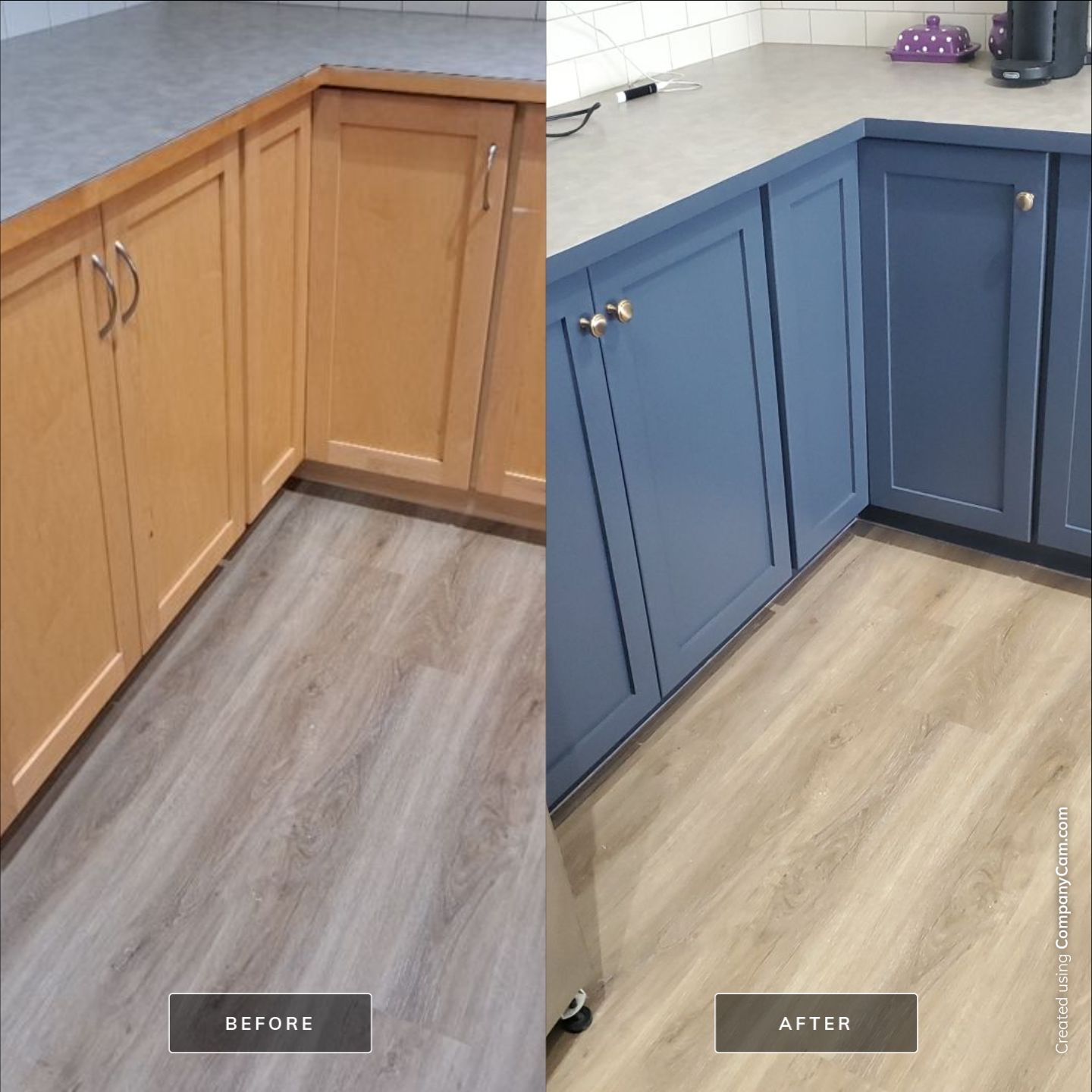Can You Stain Painted Cabinets? Surface Preparation

Successfully staining painted cabinets requires meticulous surface preparation. The goal is to create a smooth, clean surface that allows the stain to penetrate evenly and adhere properly, resulting in a professional-looking finish. Failure to adequately prepare the surface will lead to an uneven stain application, highlighting imperfections and ultimately ruining the project.
Sanding Painted Cabinets
Proper sanding is crucial for removing the existing paint and creating a suitable surface for stain absorption. This process involves a progressive grit system, starting with coarser grits to remove the bulk of the paint and gradually moving to finer grits to achieve a smooth finish. Improper sanding can leave scratches visible under the stain, while insufficient sanding will prevent adequate stain penetration.
| Sanding Method | Pros | Cons | Grit Progression Recommendation |
|---|---|---|---|
| Hand Sanding | Precise control, good for detail work, less expensive upfront cost. | Labor-intensive, time-consuming, can cause fatigue. | Start with 80-100 grit, progress to 120-150 grit, finish with 220 grit. |
| Power Sanding (Random Orbital Sander) | Faster, less physically demanding, more even sanding. | Can remove too much material quickly if not used carefully, higher initial cost. | Start with 80-100 grit, progress to 120-150 grit, finish with 220 grit. |
| Power Sanding (Belt Sander) | Very fast material removal. | High risk of gouging or removing too much material, requires significant skill. Not recommended for cabinets. | Not recommended for cabinet refinishing. |
The recommended grit progression is a general guideline. Adjust the grit based on the thickness and hardness of the paint. Always sand in the direction of the wood grain to avoid creating cross-grain scratches. Multiple passes with each grit are often necessary to achieve a smooth surface.
Cleaning Cabinets After Sanding
Thorough cleaning after sanding is essential to remove all sanding dust and debris. This dust can interfere with stain penetration and create an uneven finish. A tack cloth, a slightly sticky cloth designed for dust removal, is highly effective for this purpose. Alternatively, a vacuum cleaner with a brush attachment can be used to remove loose dust particles, followed by a tack cloth to remove any remaining residue. Compressed air can also be effective in removing dust from hard-to-reach areas. Using a damp cloth (slightly damp, not soaking wet) can also be used to remove finer dust particles. However, ensure the cabinets are completely dry before proceeding to the next step. Using a cleaning solution is generally not recommended as it can leave residue that will interfere with stain adhesion.
Filling Imperfections
Before staining, any imperfections such as holes, scratches, or dents should be filled using wood filler. Choose a wood filler that is compatible with the type of wood in your cabinets. Apply the filler according to the manufacturer’s instructions, ensuring it is level with the surrounding surface. Once the filler is dry, sand it smooth using fine-grit sandpaper (220 grit or higher) to blend it seamlessly with the surrounding surface. This ensures a smooth, even surface for stain application, preventing the filler from being noticeable after staining. For larger imperfections, multiple applications of filler and sanding may be necessary.
Staining Techniques for Painted Cabinets

Staining painted cabinets requires a careful approach, as the existing paint layer impacts stain absorption and overall finish. The choice of staining method significantly influences the final result, impacting both the color depth and the longevity of the stain. Understanding the properties of different stain types and their application techniques is crucial for achieving a professional-looking finish.
Stain Type Comparison
The selection of stain type—gel, water-based, or oil-based—is a critical first step. Each possesses unique characteristics affecting its application and final appearance. Choosing the right stain depends on factors such as desired finish, application ease, and drying time.
- Gel Stain: Gel stains are thicker than water-based or oil-based stains, allowing for better coverage and minimizing the risk of blotchiness on uneven surfaces. They are ideal for concealing imperfections and providing a more opaque color. However, they can be more challenging to work with due to their viscosity and slower drying time.
- Water-Based Stain: Water-based stains are easy to clean up with soap and water, and they tend to have lower VOCs (volatile organic compounds), making them a more environmentally friendly option. They penetrate the wood well, resulting in a natural look. However, they can raise the grain of the wood, requiring sanding before applying additional coats. They also tend to be less opaque than gel stains.
- Oil-Based Stain: Oil-based stains offer deep penetration and rich color saturation, leading to a durable finish. They are less prone to raising the grain than water-based stains. However, they have a strong odor, require mineral spirits for cleanup, and have a longer drying time. They also contain higher VOCs compared to water-based options.
Stain Application Process
The application process varies slightly depending on the chosen stain type, but several common principles apply across all types. Proper preparation, including thorough sanding and cleaning of the painted surface, is crucial for optimal stain adhesion and even color distribution.
- Preparation: Before applying any stain, the painted surface must be thoroughly sanded to create a slightly rough texture for better stain adhesion. This is particularly important for achieving a consistent color, especially when working with existing paint. After sanding, wipe the surface clean with a tack cloth to remove any dust particles.
- Application: Apply the stain in the direction of the wood grain using a high-quality brush, sponge applicator, or lint-free cloth. For gel stains, a brush is often preferred due to the viscosity of the product. For water-based and oil-based stains, a rag can provide a more natural look, although brushes can help achieve more even coverage. Work in small sections to avoid the stain drying before you can blend it properly.
- Even Coverage Techniques: To achieve even coverage, work in thin, even coats, avoiding pooling or excessive application. For areas with uneven paint or wood grain, multiple thin coats are preferable to one thick coat. Use a clean rag to wipe off excess stain immediately after application, allowing the stain to penetrate the wood but preventing an uneven, blotchy appearance.
Multiple Coat Application
Achieving the desired depth of color often necessitates multiple coats of stain. The number of coats required depends on the stain type, the desired color intensity, and the absorption rate of the wood. Allowing adequate drying time between coats is essential for preventing issues such as bubbling or uneven color.
- Drying Time: Drying times vary considerably depending on the stain type, temperature, and humidity. Water-based stains generally dry faster than oil-based stains, which can take several hours or even overnight to dry completely. Gel stains typically fall somewhere in between. Always refer to the manufacturer’s instructions for specific drying time recommendations.
- Application of Subsequent Coats: Before applying a second coat, lightly sand the previous coat with fine-grit sandpaper (e.g., 220-grit) to smooth out any imperfections and ensure better adhesion. Wipe clean with a tack cloth to remove any dust. Then, apply the second coat using the same techniques as the first coat. Repeat this process for any additional coats needed to achieve the desired depth and richness of color.
Addressing Challenges and Potential Issues

Staining painted cabinets presents unique challenges due to the existing paint layer acting as a barrier between the stain and the wood. Success hinges on meticulous preparation and a thorough understanding of potential problems. Uneven color, blotchiness, and poor adhesion are common pitfalls, often stemming from inadequate surface preparation or improper staining techniques. Addressing these issues requires a systematic approach combining careful planning with the right tools and materials.
The primary challenge lies in achieving uniform stain penetration and absorption. Paint acts as a sealant, preventing the stain from reaching the wood fibers evenly. This can lead to blotchiness, where some areas absorb more stain than others, resulting in an uneven and unprofessional finish. Poor adhesion occurs when the stain doesn’t bind properly to the underlying surface, leading to peeling or flaking over time. These problems are often exacerbated by the type of paint used and the condition of the cabinets themselves. Older paint may be more prone to chipping or cracking, further complicating the staining process.
Uneven Color and Blotchiness
Achieving a consistent color across all cabinet surfaces requires careful sanding to create a uniform surface for stain absorption. The goal is to remove the existing paint layer sufficiently to allow the stain to penetrate the wood evenly, but not so much that you damage the wood itself. Areas with thicker paint will absorb less stain, leading to light patches. Conversely, areas where the paint is removed excessively will absorb more stain, leading to dark patches. The use of a high-quality stain, applied in thin, even coats, also contributes significantly to a consistent finish. Over-application of stain will inevitably lead to blotchiness and uneven color. Applying multiple thin coats allows for better control and minimizes the risk of pooling or uneven absorption. Careful monitoring of the drying time between coats is crucial, preventing smudging or overlapping.
Poor Adhesion, Can you stain painted cabinets
Poor adhesion is often a result of insufficient surface preparation. If the paint is not properly sanded and cleaned, the stain will not adhere properly to the surface. This can lead to peeling or flaking over time, rendering the staining process ineffective. To improve adhesion, ensure that the sanded surface is thoroughly clean and free of dust or debris. A tack cloth is excellent for this purpose. The use of a quality wood conditioner before staining can also enhance adhesion, promoting better penetration of the stain into the wood fibers. A conditioner helps to even out the absorption of the stain, minimizing the chance of blotchiness and promoting better bonding. The choice of stain itself also plays a role; oil-based stains generally offer better adhesion than water-based stains, although water-based stains are easier to clean up.
Troubleshooting Tips
Addressing issues encountered during the staining process often requires a multi-faceted approach. The following tips can help prevent and correct common problems:
- Thoroughly sand the painted surfaces to create a uniform texture, removing the majority of the paint without damaging the wood.
- Clean the sanded surfaces meticulously with a tack cloth to remove all dust and debris.
- Apply a wood conditioner to even out stain absorption and improve adhesion.
- Apply thin, even coats of stain, allowing sufficient drying time between coats.
- Use a high-quality stain suitable for painted surfaces.
- If blotchiness occurs, lightly sand the affected areas and reapply stain, blending carefully.
- If peeling occurs, remove the affected areas and re-sand and re-stain.
- Consider using a pre-stain wood conditioner to ensure even absorption and minimize blotching.
- Always test the stain on a less visible area before applying it to the entire surface to check for color consistency and potential issues.
